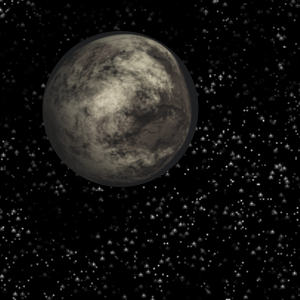| Proper Name | None | | Minor Planet Designation | 278361 2007 JJ43 | | Provisional Designation | 2007 JJ43 | | Orbital Period | 331 years, 261 days | | Distance from the Sun | Semi-Major Axis: 7,168,510,000 km (47.92 AU)
Perihelion: 6,026,696,000 km (40.29 AU)
Aphelion: 8,310,324,000 km (55.55 AU) | | Eccentricity | 0.1593 | | Rotation Period | 12 hours, 6 minutes | | Diameter | 610 km (approximate) | | Moons | None known | | Parent star | The Sun, yellow dwarf | | Other planets in this system | Mercury, terrestrial planet
Venus, terrestrial planet
Earth, terrestrial planet
Mars, terrestrial planet
Jupiter, gas giant
Saturn, gas giant
Uranus, ice giant
Neptune, ice giant
Numerous dwarf planets, asteroids and other bodies
|

The appearance of 2007 JJ43 is not known in detail, but observations imply that it is somewhat irregular in shape, and its surface is probably patterned with darker and lighter areas.
An object of the outer Solar System following a distant course around the Sun, far beyond Neptune. The orbit of 2007 JJ43 carries it through the Kuiper Belt, at a distance ranging between 40 and 56 AU from the Sun. This path takes the planetoid back and forth across the 'Kuiper Cliff', the area where the densest inner parts of the Kuiper Belt give way to a less populated outer region beyond.
2007 JJ43 is notable as falling among the most intrinsically bright objects in the outer Solar System, with an absolute magnitude of about +4 (sources vary on the exact figure). Its precise dimensions are also somewhat uncertain, but it appears to be some 610 km in diameter, and is therefore likely to fall within the definition of a dwarf planet. There are indications that this body has a somewhat irregular shape, or perhaps hosts distinctive markings on its surface.
|
|